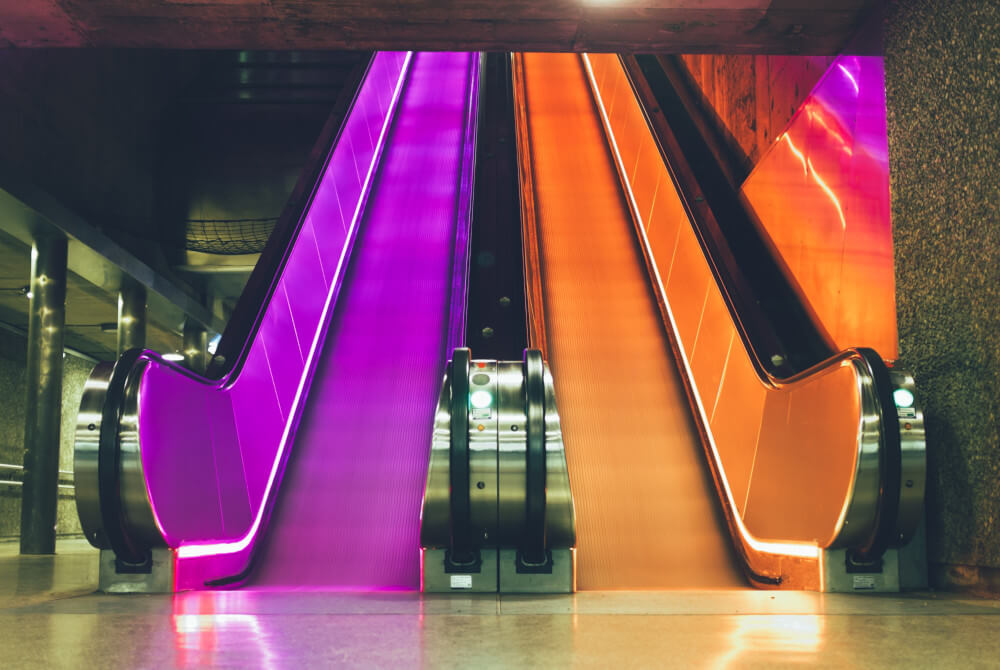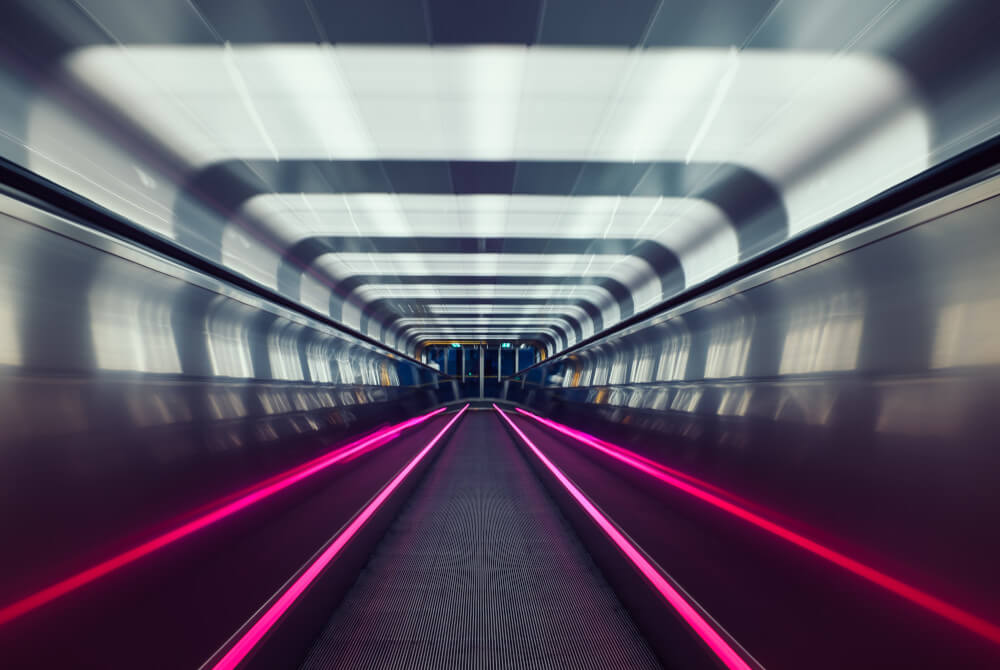Oslo Metro – The route network
Today, the Oslo T-bane is the heart of public transportation in Norway’s capital. Founded in 1922 under the name “Untergrunnsbane”, the Oslo subway was expanded from 1966 from several tram and suburban railway lines into a comprehensive subway network. The metro network operated by the “Oslo T-banedrift AS” company currently covers a length of 86 kilometers. The 101 stations are spread over five lines that serve the entire city area of Oslo and are used by around 95 million passengers every year.
A special feature of the T-bane Oslo compared to the London Underground and other subway systems is the fact that only 17 stations are underground. These are mainly concentrated in the area of the large inner city ring road and are all routed through the large inner city tunnel (Fellestunnelen).
There are numerous transfer options from the tunnel stations to the other lines. The station “Helsfyr” (Central Station), where lines 2, 3 and 4 intersect, is particularly important. Each of the five lines has a unique number and an assigned color, thanks to which visitors from outside Oslo can also quickly find their way around the Oslo Metro Map.
The Oslo Metro lines at a glance
- Line 1 (Frognerseteren ↔ Helsfyr / Bergkrystallen)
- Line 2 (Østerås ↔ Ellingsrudåsen)
- Line 3 (Kolsås ↔ Mortensrud)
- Line 4 (Vestli ↔ Bergkrystallen)
- Line 5 (Sognsvann ↔ Vestli)
Information for tourists about the Oslo T-Bane
Whether by plane, car, ferry or cruise ship. Tourists reach Norway, and therefore Norway’s capital, in many different ways. Oslo alone is visited by over a million tourists every year. No wonder that T-bane Oslo is experiencing a real boom in commuters and tourists.
Lines 4 (dark blue) and 5 (light green) in the city center are particularly busy, providing short routes to sights such as the Royal Palace, the National Museum Oslo, the Nobel Peace Center and the famous Akershus Fortress with its military museums.
At peak times, Line 1 will be extended to the Bergkrystallen terminus, thus further easing the traffic situation.
However, leisure destinations outside the city, such as the Frognerseteren recreation area, can also be easily reached in a short time with Oslo’s subway (line 1). This makes the Oslo Metro Map ideal for getting around Norway’s capital quickly.
Metro Oslo: Tickets & Prices
Anyone looking at the Oslo Metro Map for the first time to get from A to B will inevitably ask themselves how much a ticket costs. While the metro system in many other cities is divided into several zones, the Oslo metro is in a single fare zone. This also eliminates the tedious search for zone boundaries and individual stations when purchasing tickets. Ideal for tourists and anyone new to Oslo. The flat rate system only presents visitors with one challenge – converting Norwegian kroner into euros.
As the tickets are also valid for the bus, streetcar, local trains and even Oslo’s ferries, they offer maximum flexibility. In addition to one-way tickets, 24-hour tickets and weekly tickets are also available. One-way tickets are valid for one hour from the time of purchase.
The special feature: Within this hour, a free transfer to other lines is just as possible as a return journey in the opposite direction. The subway tickets are available both at external ticket machines in the city and directly at subway stations. Alternatively, one-way tickets, 24-hour tickets and weekly tickets can be purchased via the “RuterBillett” smartphone app. The app is available in both the Google Play Store and the Apple App Store.
The most important metro tickets in Oslo
| Ticket | Prices | Buy a ticket |
|---|---|---|
| Single ride | from 3.69 Euro | Buy online |
| Single ride (reduced) | from 1.90 Euro | Buy online |
| 24 hour ticket | from 5.80 Euro | Buy online |
| 24 hour ticket (reduced) | from 2.95 Euro | Buy online |
| 7 Day ticket | from 26.20 Euro | Buy online |
| 7 Day ticket (reduced) | from 13.20 Euro | Buy online |
| Oslo Pass (Oslo Card) | from 30 Euro | Pre order online |
The city of Oslo, in cooperation with the operator of the Oslo T-bane, offers the Oslo Pass for vacationers. This allows unlimited use of public transport in Zone 1 and Zone 2, whether by subway, bus, streetcar or ferry. The highlight, however, is the fact that the Oslo Pass grants free entry to over 30 museums and attractions.
There are also discounts at other places worth visiting, such as the TusenFryd amusement park and the Oslo ski simulator, or when purchasing a climbing or ski pass in the winter season. The Oslo Pass is available for 24, 48 and 72 hours in both its regular and discounted versions.
Oslo Metro departure times
In contrast to other metro timetables, the Oslo Metro Map timetable is a little more relaxed, just like the Scandinavian temperament. The fact that the Oslo T-Bane only runs from 5:30 a.m. to 0:30 a.m. shows that the people of Oslo are not really night owls.
This time slot applies to all five lines, although some stations are only served from 6:00 am. The regular interval between trains provides additional clarity. The subway runs every 10 minutes on all lines between 5:30 am and 9:00 pm. Between 21:00 and 0:30, trains run every half hour.
To the timetables of Oslo’s metro lines:
Line 1, Line 2, Line 3, Line 4, Line 5
So if you want to get around Oslo after midnight, you can’t use the metro or have to wait for the first metro in the early morning after a night out in Oslo’s nightlife. Alternatively, you can take the night buses, which usually run every 60 minutes or so on Oslo’s standard bus routes. Due to the comparatively short distances in Norway’s capital, even short distances on foot or by cab are no problem.
Further information on the Oslo Metro
The increasing attractiveness of Oslo as a business location and the growing number of visitors from home and abroad have prompted the city planners to expand the Oslo Metro Map. In order to relieve the system and be prepared for future challenges, a second inner city tunnel is planned to the north of the first tunnel.
This will connect the districts of St. Hanshaugen and Grünerløkka to the metro network via additional stations. In addition, the extension of existing lines to Fornebu, Ahus and the expansion to the south with the expected terminus stations Gjersrud and Stensrud are also being planned.





